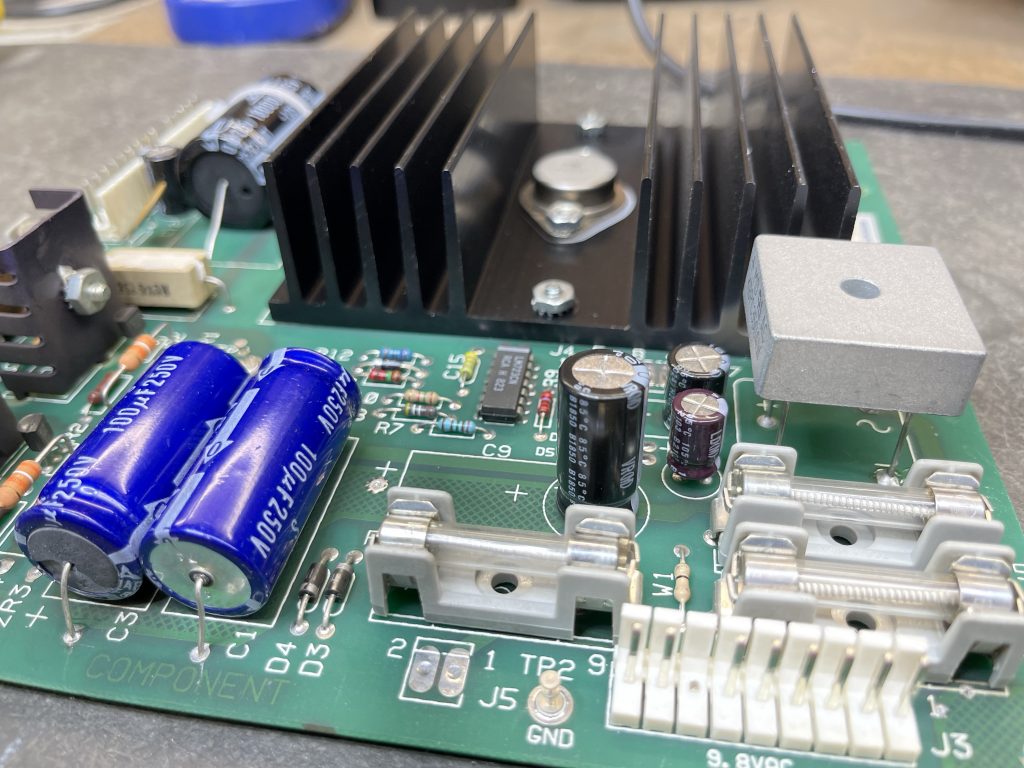Not too long ago we had a Bally Transporter come in the shop. It played great until the sound suddenly stopped working. There was no sound at all, no music and no speech, just a hum from the speakers
Whenever you have a problem it’s always a good idea to check all of your voltages first (usually). I initially didn’t suspect a voltage problem because the rest of the game was working fine. One voltage was missing, the -12v which is only used by the sound circuit.

The above picture shows how the -12v is created. It’s a simple circuit that’s nothing more than a line taken off the negative side of the bridge rectifier with a filter cap. If you look closely at the schematic you’ll notice that the positive side of the capacitor goes to ground. This is how all capacitors in the negative voltage section of a circuit will be oriented.
That’s all there is to it. The -12v circuit is unregulated meaning it’s output voltage can vary by a few volts up or down. Since there’s nothing else to it, it will be easy to fix. More on that in a moment.
As I mentioned before, the -12v is only used by the sound circuit. Negative voltages are usually used by op-amps and sound amplifiers. In this case the -12v is used by the 1408 DAC and the 1458 op-amps as you can see in the sound board schematic detail below.

There are several 1458’s on the board and they comprise the sound mixing section. If they don’t work you won’t have any sound. The game logic generates the sounds digitally then the 1408 DAC and the 55516 CVSD (Continuously variable slope delta modulator) convert the the sounds to analog signals that can be mixed, amplified and sent to the speakers. I’ll discuss 55516 and the 1408 in further detail in a later post.
I already replaced the capacitor so I had no reason to suspect it was bad but I tested it with may ESR meter anyway just to make sure. That leaves only one other thing to cause the problem. The bridge rectifier.

As you can see in the photo below the sides of the bridge are blown out. The positive side diodes were ok, it was a bad diode in the negative side that prevented the negative voltage from being created.

I measured each diode and found one was open. I replaced the bridge with a new one and mounted it as high as possible off the PCB so it could get maximum airflow around and under it to maximize cooling as seen below.

I reinstalled the power supply and voila! Sounds are loud and clear. This should be an important reminder that if all voltages aren’t correct and stable things can stop working or cause your game to act erratic. Hopefully you found this helpful. Till next time. Frank

Be the first to comment